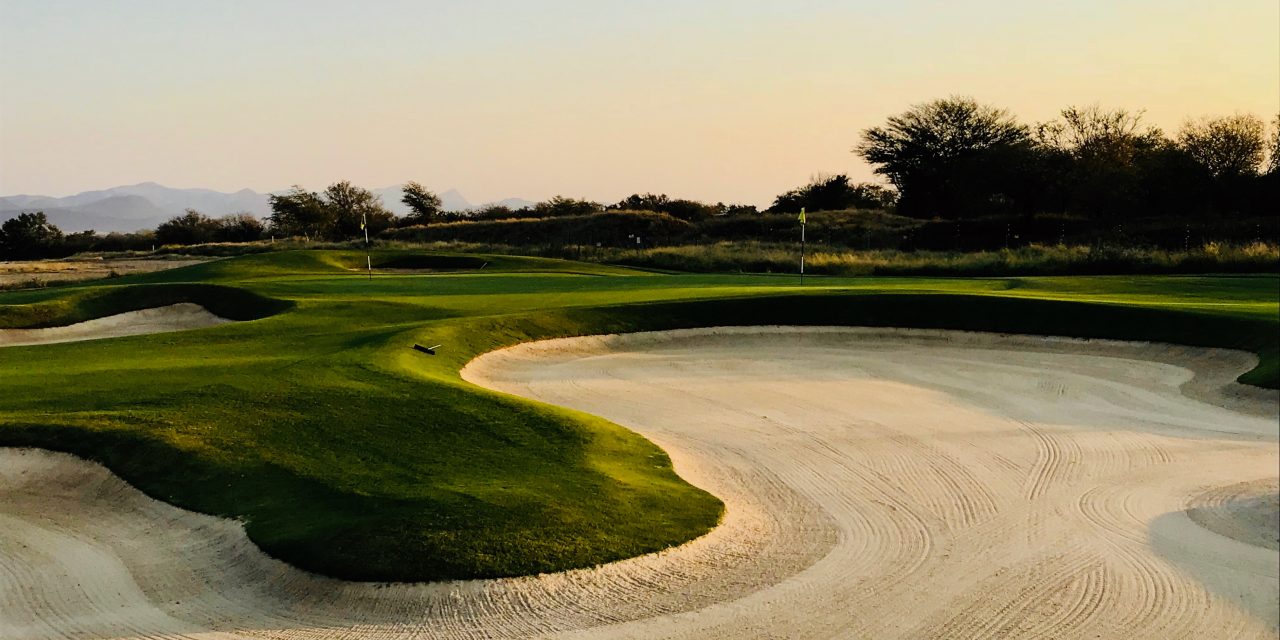By Noah Meffert
Photo by Edwin Compton on Unsplash
Augusta National, TPC Sawgrass, and Carnoustie. These and many other golf courses sit at the pinnacle of the golfing world as the courses where some of the greatest tournaments are played each year. What makes these courses special, however, is the marked difference in how these courses are built and laid out. For a course like Augusta, where the Masters is played, the challenge for the golfers is keeping the ball out of the trees, where pinestraw blankets the ground and it is hard to get a club on the ball. At TPC Sawgrass, which hosts The Players Championship, avoiding the water is the name of the game. With water getting involved on every hole, a golfer must trust his game and know his shots to be able to navigate this tough course. Finally, at a venue such as Carnoustie, there are no trees or water, just long, wavy grass that lies in wait beside the fairways to snag a stray golf ball. As far as difficulty, these courses are essentially on par, as they are used as venues to host some of the biggest tournaments for the best players in the world. Their difficulty might be high, but the ways in which these courses challenge golfers is quite different on many levels and for many different reasons, and it all comes down to the type of golf course it was built to be.
When it comes to the golf courses that you will find around the world today, they can be split up into three different categories of courses: links, parkland, and desert. In pairing them with different venues, Augusta National and TPC Sawgrass would be considered parkland courses, while Carnoustie, which is constructed on the rolling hills of England, would be classified as a links course. While there are no examples of a desert course, the name lends itself to identifying what kind of a course it is and where it is built.
When considering the layout of most golf courses around the US and the world, the parkland design is the most common, due to its versatility and ease of construction. The most prominent features of a parkland course are trees and water, which typically line the fairways and penalize bad shots. According to golf.com, “Parkland courses are built inland, away from the ocean. These courses often feature lots of trees and lush grass. If you watch the PGA Tour, you’ve probably seen plenty of parkland courses. They’re called parkland courses because they look and feel like you are playing golf in a park. It’s usually the case that parkland courses are well-manicured, and are full of man-made features like dug bunkers, ponds and built-up rough.” As stated in the article, many of the courses played by the PGA Tour are parkland courses, which is one of the reasons why they are so popular all over the world. Parkland courses, however, are not the only courses that are available to the public and PGA Tour, as many flat and grassy areas of the world are home to links courses, which look much different than parkland courses.
In a links golf course, the main components are the rolling hills on which the course is constructed and the long, intrusive grass that makes up the rough. These types of courses are most commonly found in the UK, Ireland, and Scotland, where parkland course conditions are scanty, if any, and the landscape lends itself to long, rolling fairways with barely a tree in sight. According to callahangolflinks.com, “Many links–though not all–are located in coastal areas, on sandy soil, often amid dunes, with few water hazards and few, if any, trees.” This course layout is not as common on the PGA Tour and in United States, as many areas of the country are more suited for the parkland style course. Despite their lack of popularity, links courses can be found in many parts of the US, with one of the most famous being Chambers Bay in Tacoma, which was home to the 2015 U.S. Open.
The third and final type of golf course is the desert golf course, which, as the name suggests, is built on a desert, in the desert, and is lined with the typical flora of the desert, including cacti and hearty trees. In the words of golfspan.com, “These golf courses are in a natural desert setting, preventing them from having trees in most cases. The lack of rain restricts the types of trees that golf courses such as Augusta National have. The grass situation is also very unique compared to other types of golf course, with the only places where there is grass being the tee box, fairways, and the putting green. Any desert course that has grass in the rough is really going above and beyond to do that. In most cases, they will only have rough ground that is very dry where there should be rough.” Courses like this are common in the American Southwest in states like Arizona and Texas, and in many countries in the Middle East, such as the UAE and the like. Due to the difficulty of their construction, these types of courses are not as common as parkland and links courses, though they do provide venues for some of the biggest and most well-known tournaments in the world.






